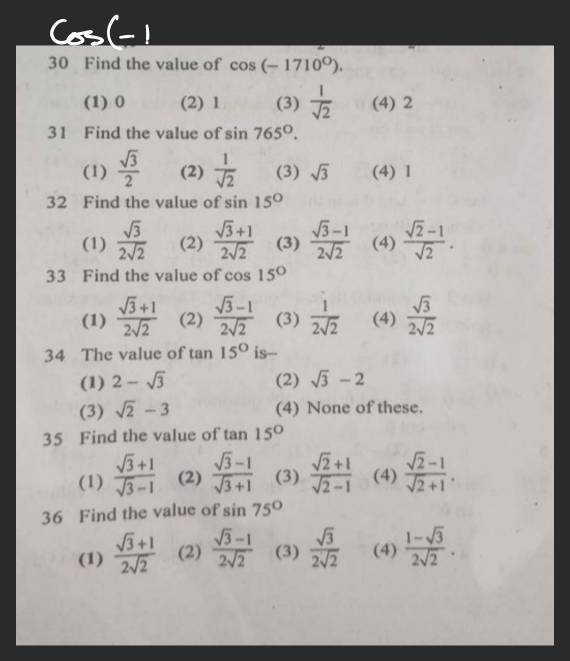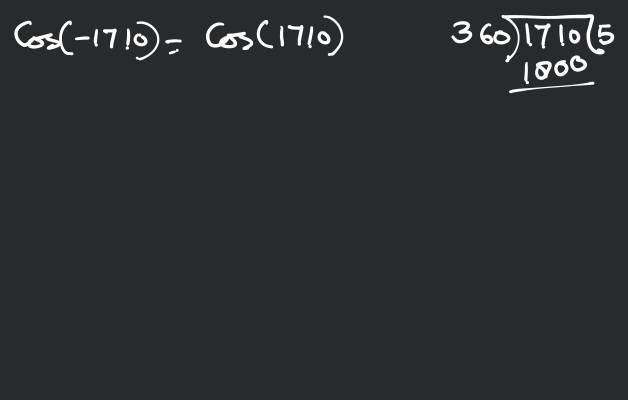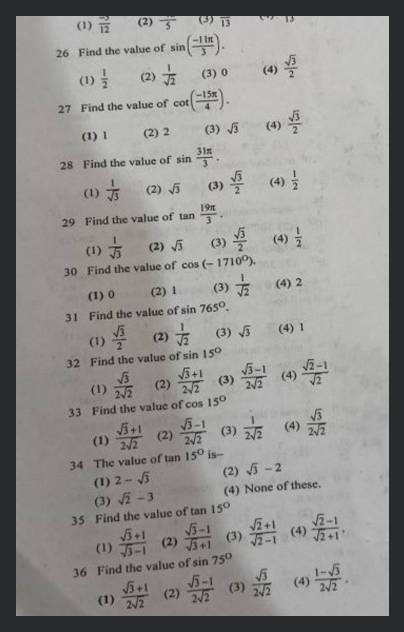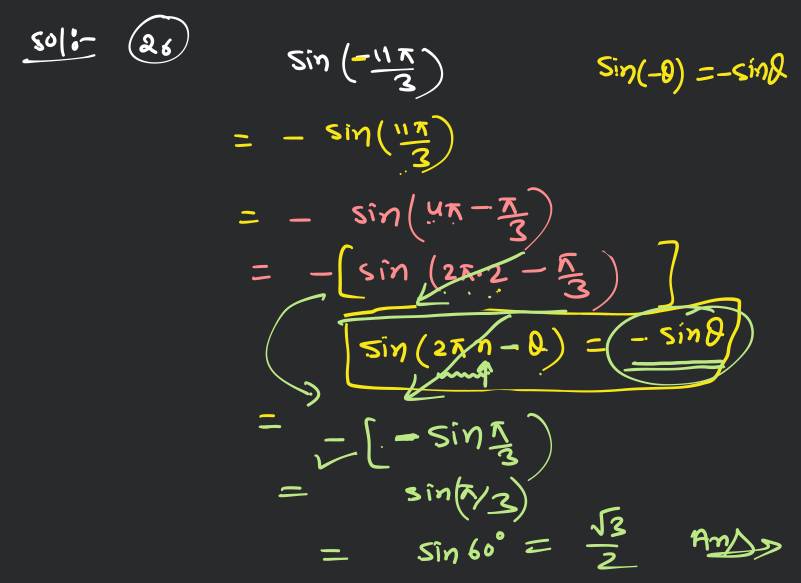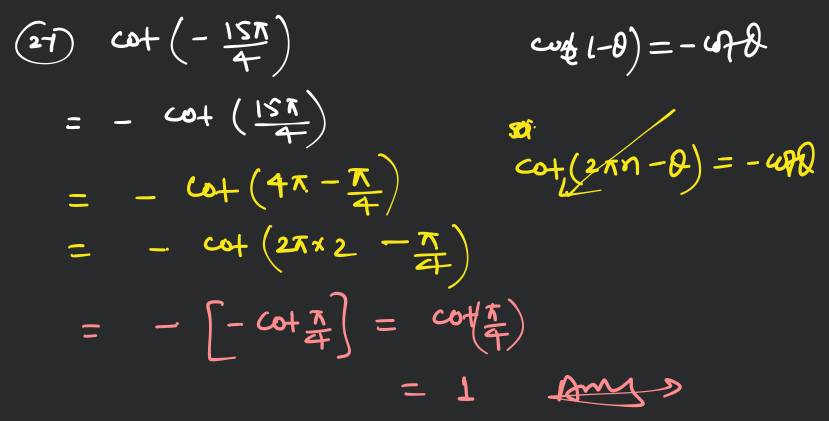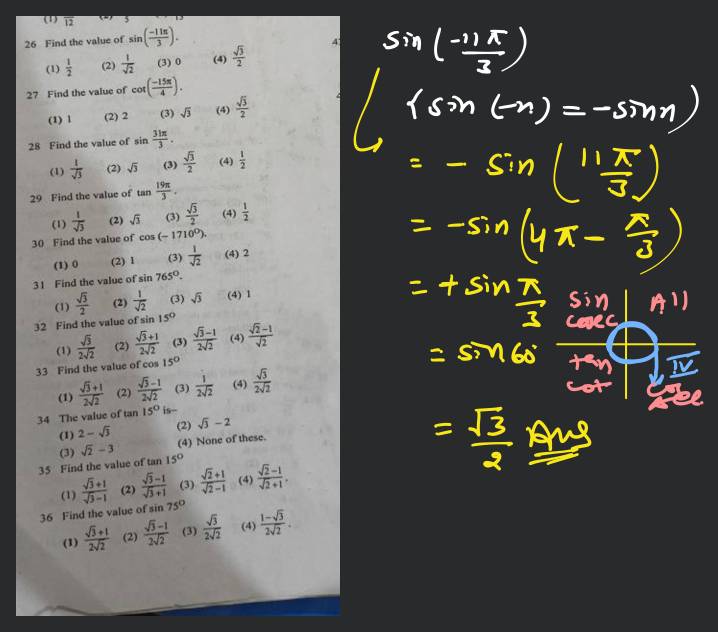Question
Easy
Solving time: 2 mins
Find the value of
Found 2 tutors discussing this question
Discuss this question LIVE
13 mins ago
 Text solution
Text solution Verified
Verified
(c)
Solving these two equations, we get
(d) Apply
and
Solving these two equations, we get
(d) Apply
and
Was this solution helpful?
55
Share
Report
Filo tutor solutions (4)
Learn from their 1-to-1 discussion with Filo tutors.
1 mins
Uploaded on: 3/16/2023
Was this solution helpful?
122
Share
Report
19 mins
Uploaded on: 2/21/2023
Was this solution helpful?
148
Share
Report

One destination to cover all your homework and assignment needs
Learn Practice Revision Succeed

Instant 1:1 help, 24x7
60, 000+ Expert tutors

Textbook solutions
Big idea maths, McGraw-Hill Education etc

Essay review
Get expert feedback on your essay

Schedule classes
High dosage tutoring from Dedicated 3 experts
Practice questions from Mechanics Volume 1 (DC Pandey)
Question 1
Medium
Views: 5,997
Question 2
Easy
Views: 5,865
Question 4
Easy
Views: 6,190
Practice more questions from Units and Measurements
Question 2
Easy
Views: 6,279
Question 4
Easy
Views: 5,976
Practice questions on similar concepts asked by Filo students
Question 1
Views: 5,660
Question 3
Views: 5,915
Question 4
Views: 5,030


Stuck on the question or explanation?
Connect with our Physics tutors online and get step by step solution of this question.
231 students are taking LIVE classes
| Question Text | Find the value of |
| Updated On | Mar 16, 2023 |
| Topic | Units and Measurements |
| Subject | Physics |
| Class | Class 11 |
| Answer Type | Text solution:1 Video solution: 4 |
| Upvotes | 451 |
| Avg. Video Duration | 6 min |



